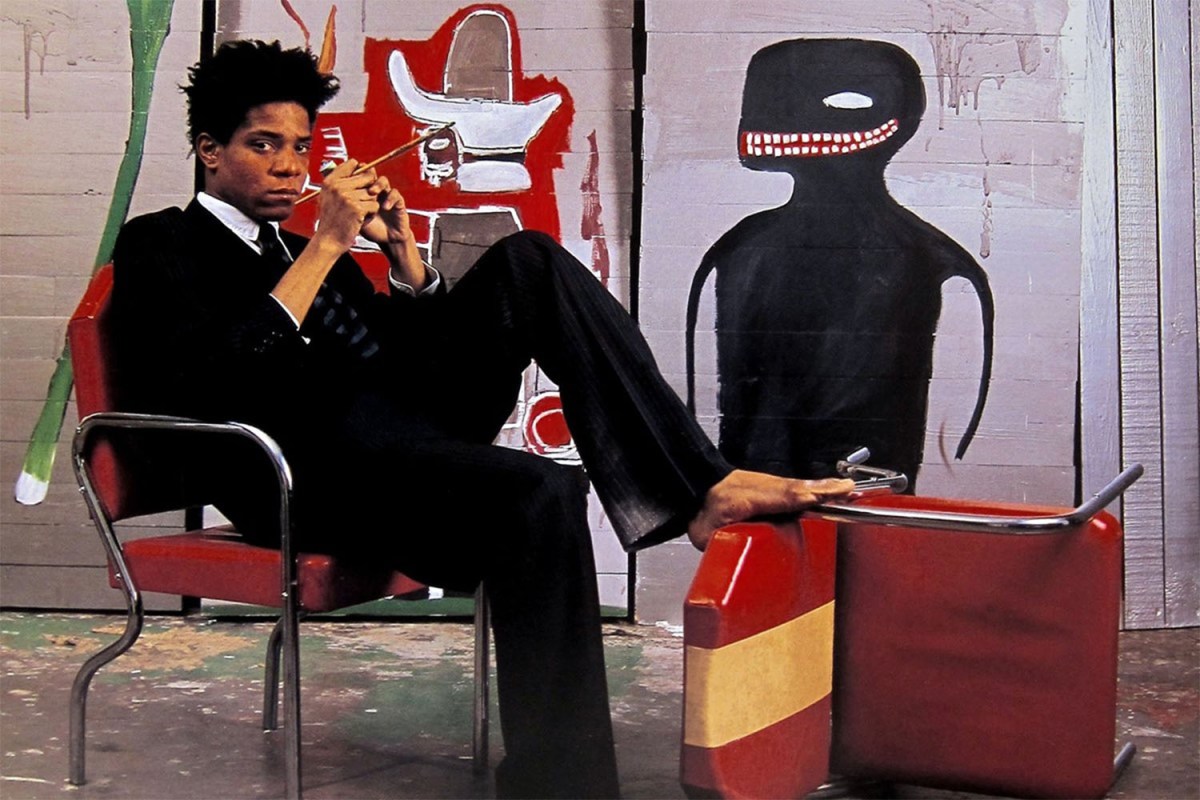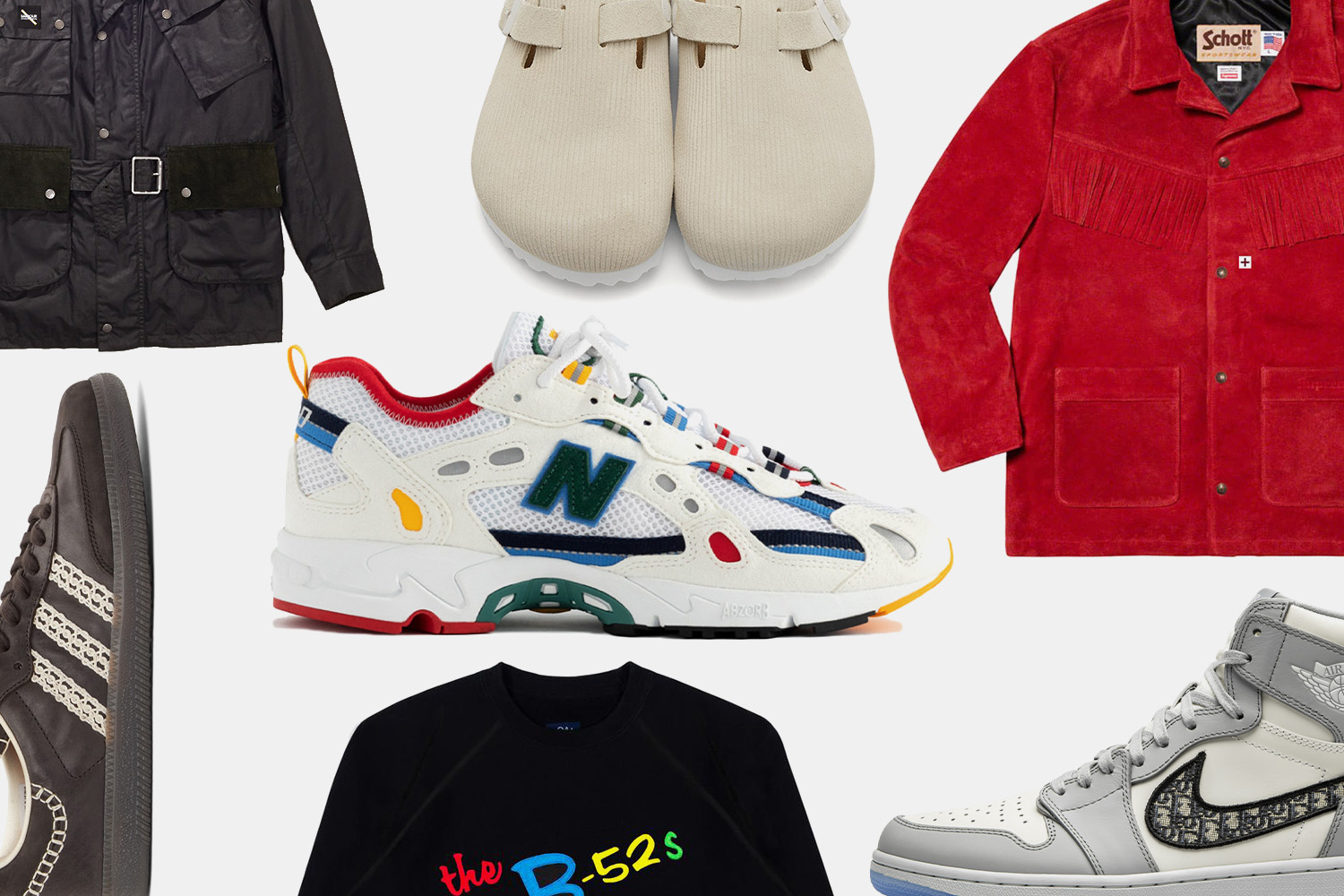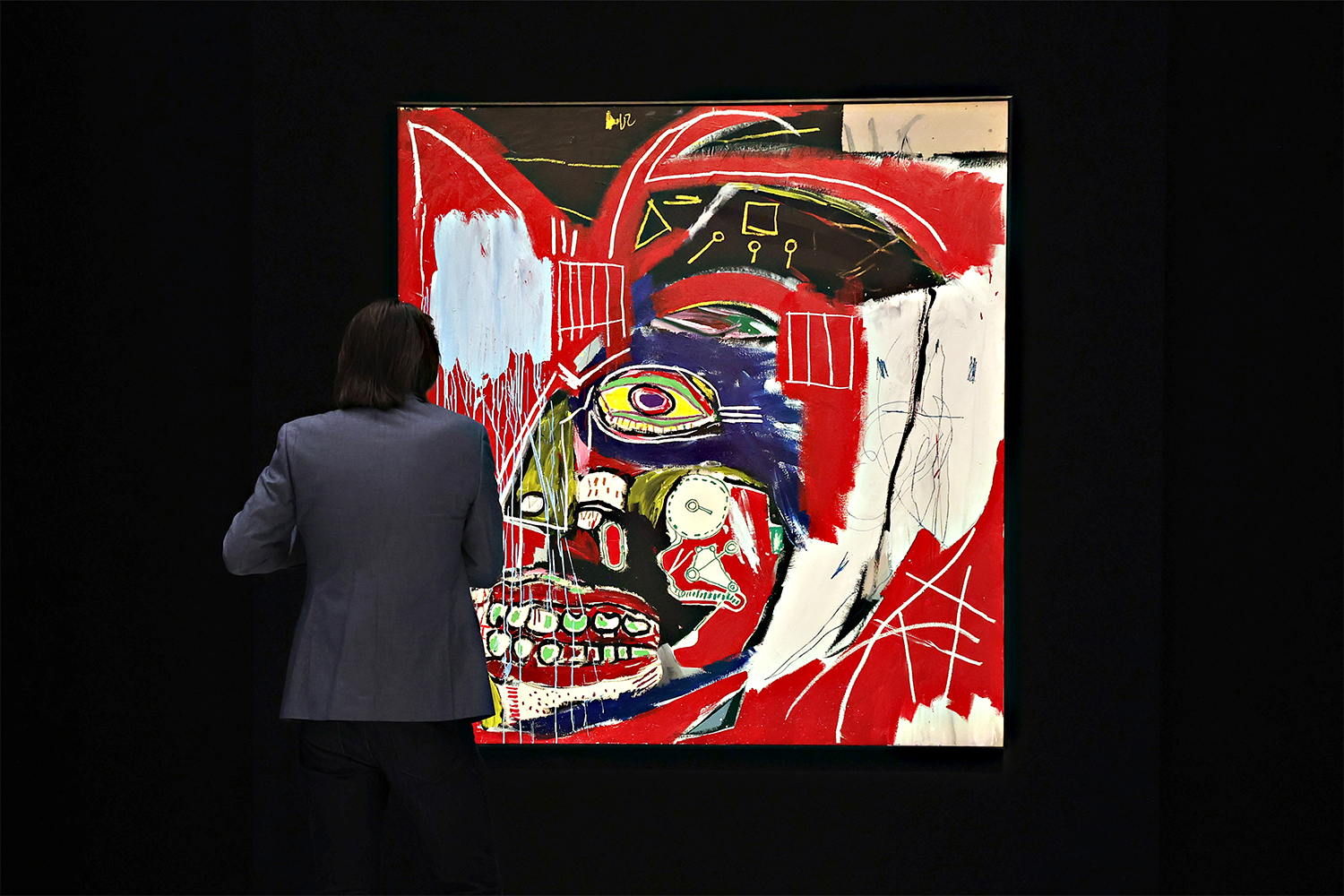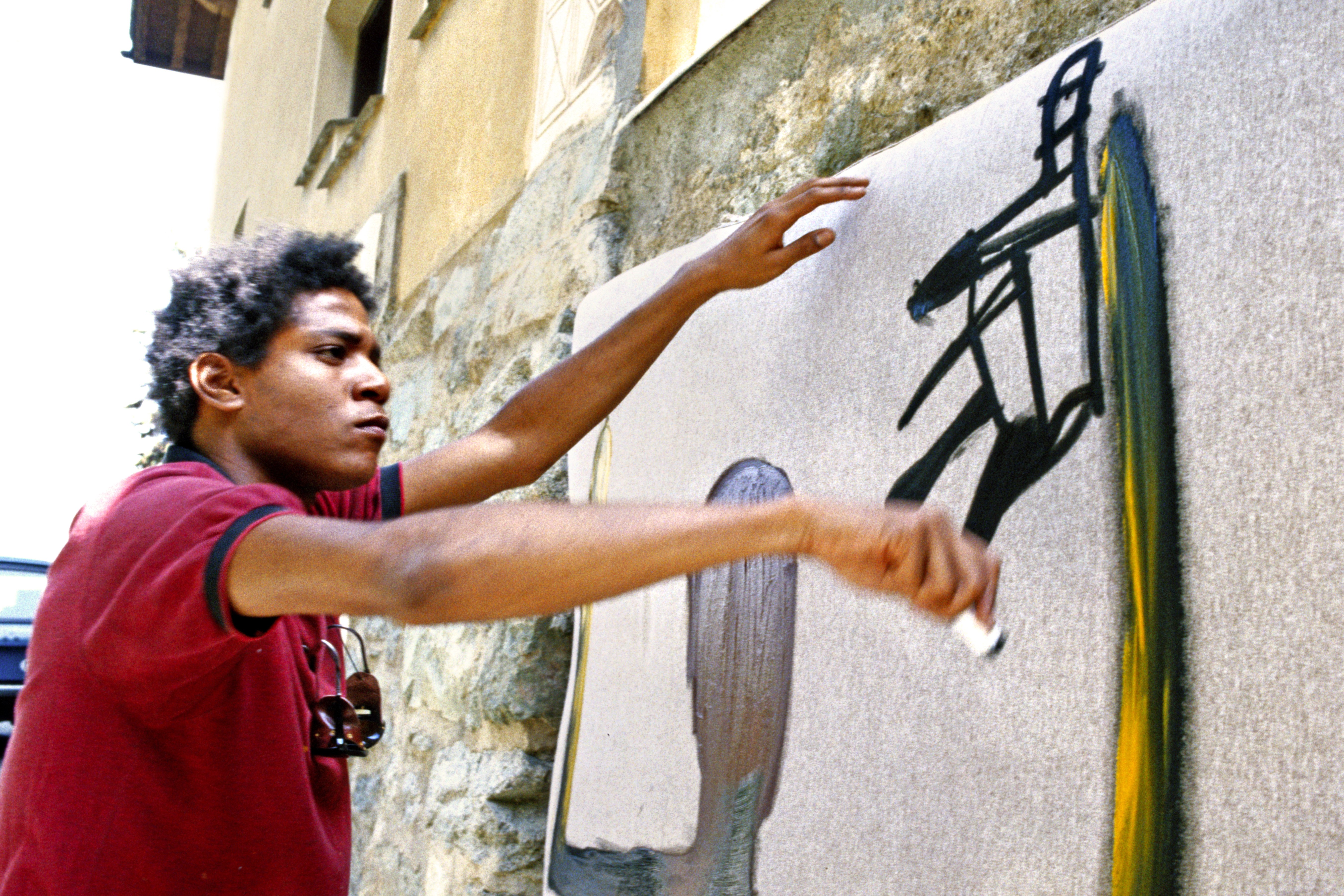Last week Saint Laurent RIVE DROITE revealed their collaboration with the estate of Jean-Michel Basquiat, consisting of a specially curated exhibition of the artist’s work (on display at the brand’s stores in Paris and Los Angeles) and a capsule collection that includes T-shirts, hoodies and a $6,000 skimboard emblazoned with the iconic scribbles for which Basquiat is known.
But what should be cause for excitement — a collaboration that combines the worlds of fashion and art — is suddenly old hat, just another Basquiat collaboration in a long line of Basquiat collaborations.
It’s hard to fault the fashion industry’s infatuation with the late artist, particularly streetwear-adjacent brands and designers. A spearhead of New York’s underground art scene in the ‘80s, Basquiat’s enormous posthumous fame attributed solely to his raw, chaotic drawings of dinosaurs, skulls, crowns and graffitied adages, but arguably more so to his general essence and what he served to embody. His youth, combined with his entrenchment in the predominantly white art scene of New York, not to mention his penchant for fashion (see this video of Basquiat walking the Comme des Garçon Spring/Summer 1987 show) imbued him with an innate coolness and authenticity that’s rare today.
Having quickly captivated not only the art world but the world as a whole in his all too brief ten-year career as an artist, it’s not surprising that his untimely death at the age of 27 propelled his art and legacy to meteoric heights, evidenced by the exorbitant sums his paintings continue to fetch. In May of this year the work Versus Medici (1982) sold for $50.8 million at Sotheby’s, the fourth most expensive Basquiat painting ever sold at auction.
But the obsession with the artist has materialized in other, more accessible ways, namely the aforementioned “collaborations” that are continuously announced. Although it’s difficult to pinpoint the first Basquiat collab to ever exist, Reebok’s Fall/Winter 2009 collaboration with the artist’s estate is among the earliest and most notable, largely responsible for introducing the artist to the “hype” world. While casual T-shirts with Basquiat’s work could be found at Uniqlo or Urban Outfitters, the collaboration marked a more serious and educative attempt to disperse his work to the masses, each shoe representing one painting and each launch (the collaboration spanned the course of five years) representing an era or style in Basquiat’s career.
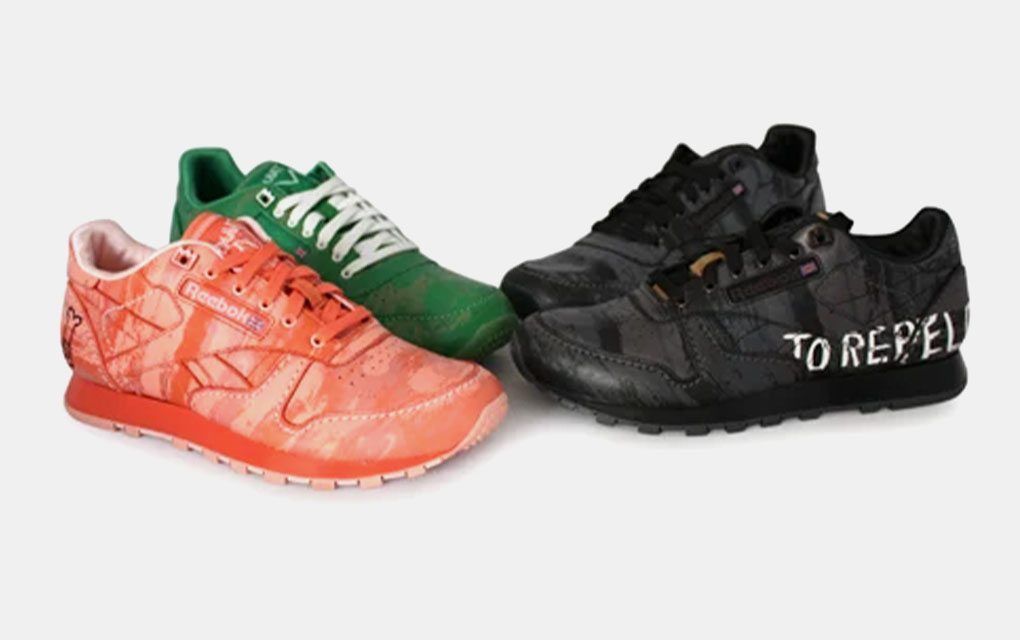
In short, the collaboration let Basquiat’s work speak for itself, translating it to a new medium yet keeping it untouched. Aware of the potential backlash that could arise from using Basquiat’s art for commercial purposes, and not being able to obtain his consent, designer Josh Herr took a humble approach to the project. “In an effort to give back to his legacy and remove ourselves from the process we decided that educating the consumer about his work was the only respectful approach,” said Herr.
In the years following, the collaborations have been innumerable and difficult to keep track of. This year alone has seen CASETiFY, Dr. Martens and Wacko Maria team up with the artist’s estate to render phone cases, Oxfords and button-down shirts with Basquiat’s expressive drawings and paintings. But where Reebok’s partnership seemed born out of a genuine desire to share the artist’s work and legacy with a less familiar generation, discerning the intent behind recent collaborations feels more like a guessing game, the most obvious being an an attempt to cash in on the cultural cachet surrounding Basquiat’s name.
The frequency with which the collaborations appear, and from brands that altogether don’t make sense (i.e. Coach’s extensive collaboration in 2020), communicates a feeling of obligation, as though it’s simply a rite of passage for designers and brands. In turn, the collections fall flat and feel redundant, offering little in the way of inspiration or ingenuity, the antithesis of both Basquiat’s work and spirit.
This isn’t to say that Basquiat should be abandoned as a collaborator entirely, or to deny the collaborations’ ability to help everyone, not just the uber-wealthy, own a piece of his work, but rather that future collaborations should be considered carefully and thoughtfully, with weight given to how and whether the collections respect and represent both the artist and his work. In a time of excessive collaborations, it’s all too easy to churn out a collab for the sake of it, yet when it comes to an artist like Basquiat, who isn’t here to speak for himself, we would be wise to observe more reverence for both his work and person, even if that means abstaining from a collaboration. And in the words of this Grailed commenter from a mere three years ago, “Let this man sleep.”
This article was featured in the InsideHook newsletter. Sign up now.
